ArtGalleries, Italy
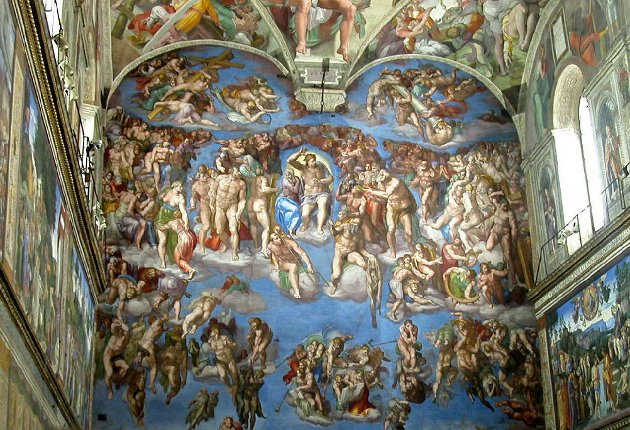
Removed from Unnamed collection
Vatican Museums and Sistine Chapel 
The first nucleus, a collection of ancient sculptures, was constituted by Julius II (1503-13) but the idea of the museum was born with Clement XIII (1758-69), who with the assistance of Winckelmann had the Museo Profano exhibiting set up Greek and Roman sculptures. With Clement XIV (1769-74) and Pius VI (1775-99) the Museo Pio Clementino was born, which brings together the most famous examples of ancient sculpture such as the Apollo del Belvedere, the Laooconte group and the Torso del Belvedere, while in 1807 -10, under Pius VII, the Chiaramonti Museum is set up by Canova, which houses Roman sculptures.
In 1822 the Braccio Nuovo is opened with over 150 sculptures including statues such as the wounded Amazon, the Doryphoros, the enormous statue of the Nile, the Augustus of Prima Porta. With Gregory XVI the Gregorian Etruscan Museum was opened in 1837 , with finds coming mostly from the nineteenth-century excavations carried out in southern Etruria, and in 1839 the Egyptian Gregorian collecting a series of statues depicting deities or characters of the royal family, sarcophagi, mummies and elements of funerary furniture. In 1844 he opened the Lateran Profane Museum (today Gregoriano Profano) and later the Pio Cristiano which collected materials from excavations in the Roman catacombs including numerous sarcophagi. https://www.turismoroma.it/it/node/121
Map
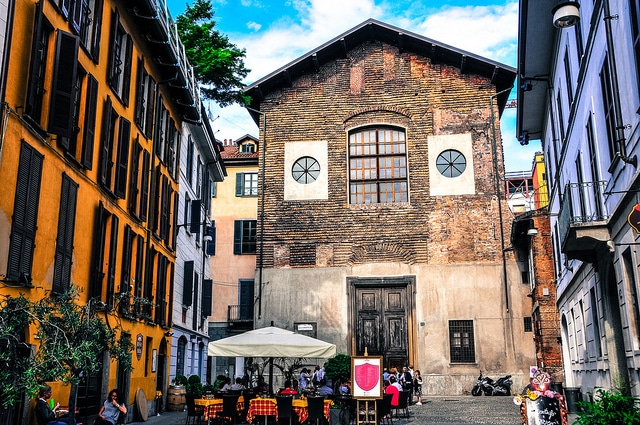
Removed from Unnamed collection
Brera 
Brera is synonymous with the artistic heart of the city. In fact, as you stroll along the streets of this ancient district, you cannot help but be enchanted by its almost surreal atmosphere boasting small artisan’s workshops or quaint stores selling canvases and paints. Additionally, Brera is home to the impressive Accademia di Belle Arti, where visitors can admire Milan’s famous painting collection at the Pinacoteca (the Brera Picture Gallery), the historic Biblioteca Nazionale Braidense (Braidense National Library) , the Museo Astronomico (The Astronomical Museum), the oldest scientific research institute in the city and the Giardino Botanico (Botanical Gardens), an evocative green space located. https://www.wheremilan.com/sightseeng-brera/welcome-to-brera-district/
Map
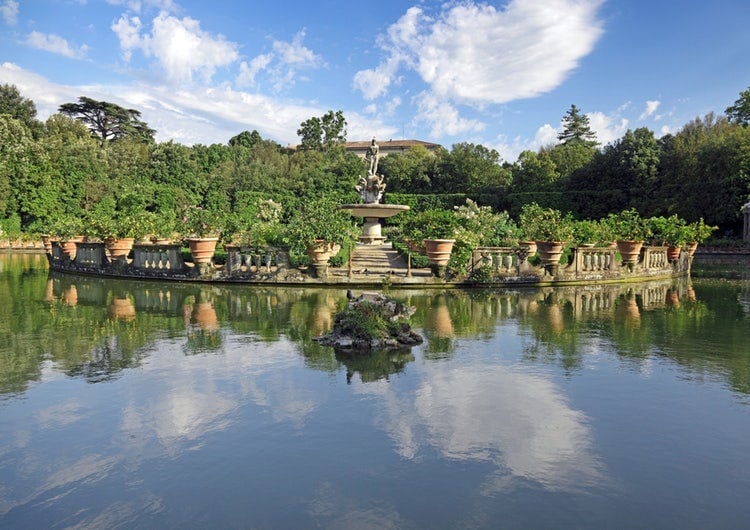
Removed from Unnamed collection
Palazzo Pitti and the Boboli Gardens 
This enormous palace is one of Florence's largest architectural monuments. The original palazzo was built for the Pitti family in 1457, designed by Filippo Brunelleschi and built by his pupil Luca Fancelli. The original construction consisted of only the middle cube of the present building. In 1549, the property was sold to the Medicis and became the primary residence of the grand ducal family. The palace was then enlarged and altered; from 1560, Bartolomeo Ammannati designed and added the grandiose courtyard and two lateral wings.
Today, the Pitti Palace houses some of the most important museums in Florence: on the first floor is the Palatine Gallery, containing a broad collection 16th and 17th century paintings (including works by Raphael), and the Royal Apartments, containing furnishings from a remodeling done in the 19th century.
On the ground floor and mezzanine is the Treasury of the Grand Dukes (formerly known as the the Silver Museum or Museo degli Argenti) displaying a vast collection of Medici household treasures, from table silverware to precious stone vases, rock crystals and precious jewelry.
The Gallery of Modern Art is on the top floor, holding a collection of mostly Tuscan 19th and 20th century paintings. https://www.visitflorence.com/florence-museums/pitti-palace.html
Map
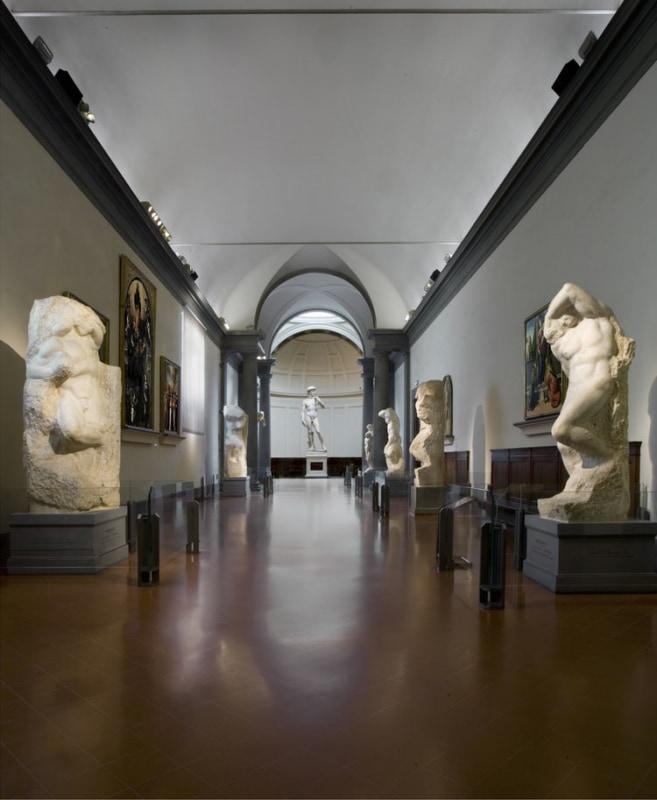
Removed from Unnamed collection
The Accademia Gallery 
Visiting the Galleria dell’Accademia, you're most likely target are the magnificent giant marble sculptures created by Michelangelo, and above all, the glorious David. If you explore the museum with a bit more time, the Accademia will offer you much more in the less crowded halls, satisfying any curiosity for botany, music, art symbols and painting techniques.
The Accademia welcomes the visitor in the Hall of the Colossus, name taken from the huge models of the Dioscuri of Montecavallo which were displayed in this large hall in the 19th century. It now hosts in the center the plaster model for the stunning marble sculpture of Giambologna’s Rape of the Sabine Women. Giambologna prepared the model as an exercise in creating a tightly-knit group of three figures from just one large block of marble. He did not actually name the sculpture, it was meant to be as a “simple” exercise of skill and it became the first example of such magnificent talent. https://www.visitflorence.com/florence-museums/accademia-gallery.html
Map
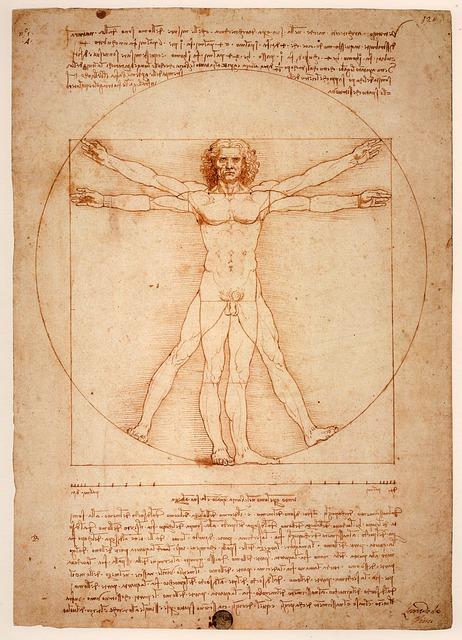
Removed from Unnamed collection
Accademia Gallery Museum 
The Accademia Museum (Gallerie dell'Accademia) is part of a complex including the church of Santa Maria della Carità, the homonymous Scuola Grande (the original entrance is now the main access to the museum) and the Monastery of the Canonici Lateranensi (the complex was in use until the beginning of the XIX century).
The gallery take its name from the Accademia delle Belle Arti (Art Accademy) who opened the building and shared the sites until few years ago (2004).
The operas preserved inside the Gallery are many and of inestimable value. Most of the painting comes from a period between the XIV and the XVIII century, the most important authors are Carpaccio, Bellini, Tintoretto, Tiziano. Also many sculptures and drawing can be admired, amongst them the vitruvian man by Leonardo da Vinci, exposed only few periods. Initially the museum was operating as didactic and restoration of art operas centre. http://venice-tourism.com/en/places/dorsoduro-district/accademia-gallery-museum
Map
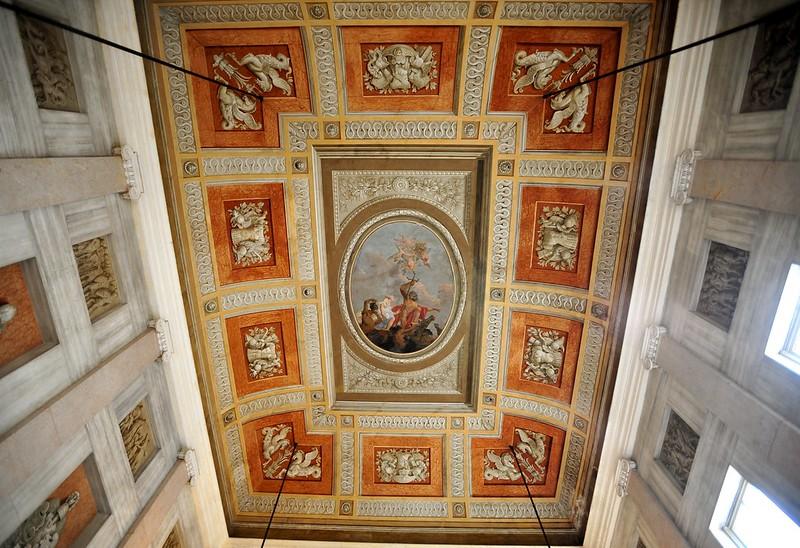
Removed from Unnamed collection
Correr Museum 
The Correr Museum offers a real opportunity to know the Art and History of Venice. In the Napoleonic wing that was during the 19th century house of kings and emperors with their impressive neoclassical rooms, we find an important collection of works of one of the greatest sculptors of that time, Antonio Canova (1757-1822). In this museum we can also visit the New Magistrates, "Procuratie Nuove", which were designed between 1552-1616 by the architect Vincenzo Scamozzi and where once the most important civic authorities of the Republic of Venice were housed.
In these spacious rooms, currently there are collections that document various aspects of the city's history, such as public institutions, daily life, naval achievements and local festivals. On the second floor is the exhibition of the Art Collection covering the period from the beginning of Venetian painting to the 16th century; also here we can find other incomparable masterpieces. https://www.venice-museum.com/correr-museum-piazza-san-marco.php
Map
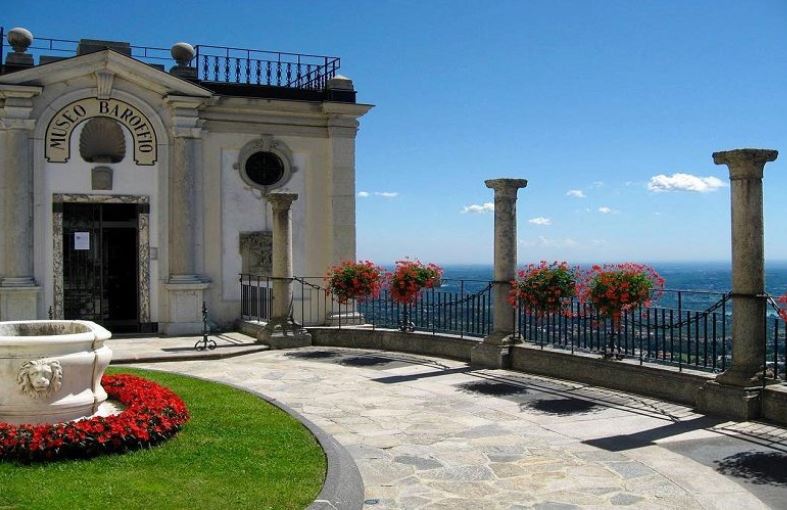
Removed from Unnamed collection
Museo Baroffio 
Dedicated to the ones interested in the history of Santa Maria del Monte, it includes and shows romanesque sculptures, precious miniatures, a collection of important paintings of Giuseppe Baroffio Dall’Aglio and a section of sacred art from the 20th century.
You'll find 20th-century bright rooms but also hidden old rooms situated under the Sanctuary, with remains of fifteenth-century frescos. The museum includes also a beautiful terrace with one of the most beautiful views in Lombardia.
The Madonna con il Bambino by Domenico and Lanfranco from Ligurno is the symbol painting of the museum. http://www.vareseturismo.it/en/blog/museo-baroffio-e-del-santuario-del-sacro-monte-sopra-varese
Map

